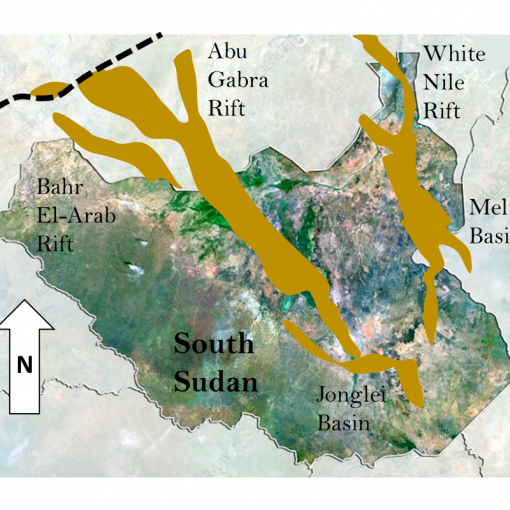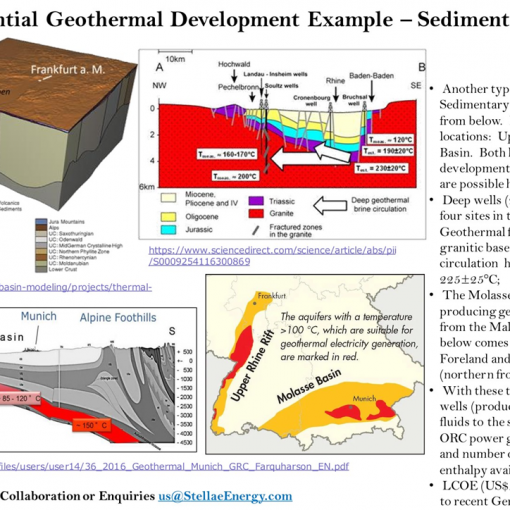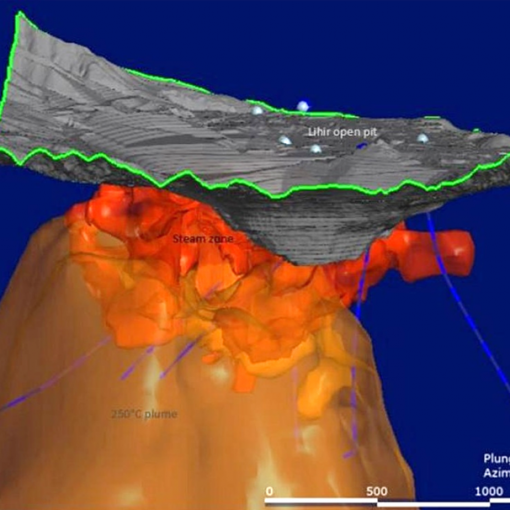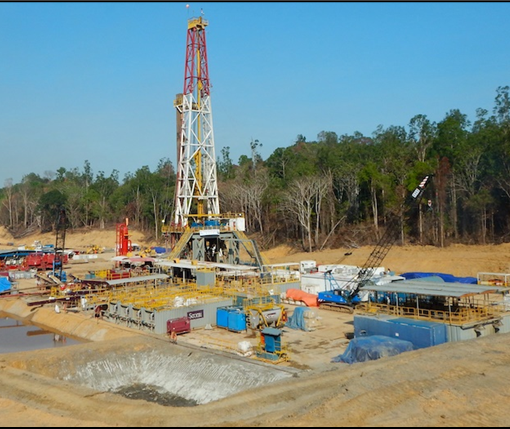Africa is a diverse continent with a wide range of climate, economies, and living standards. Increased electricity access is critical to improve economies and living standards including clean water and improved sanitation. The Energy Transition is challenged by prevailing climate conditions affecting Solar and Wind Renewables in some areas, so it appears that Natural Gas will be needed for the next 20+ years to support the population’s economies, living standards, and public health. The World Economic Forum (WEF) recently described why Gas should be part of Africa’s Clean Energy future.[1] More discussion of these WEF recommendations will be provided later in this article.
The continent is 30.37 million square kilometres, more than three times the size of Europe or America. The distance from North to South is approximately 8,000 kilometres. From East to West, the distance is approximately 7,400 kilometres. The Equator splits the continent in the middle. And across this land mass a wide range of climates have been classified. The most striking climatic difference is the amount of rainfall across the continent – the inter-tropical zone (shown in blue on the map below[2]) gets significant rainfall which means more clouds and reduced solar radiation.[3] Unfortunately these areas of solar intermittency are also adversely affected by low mean wind speeds.[4]
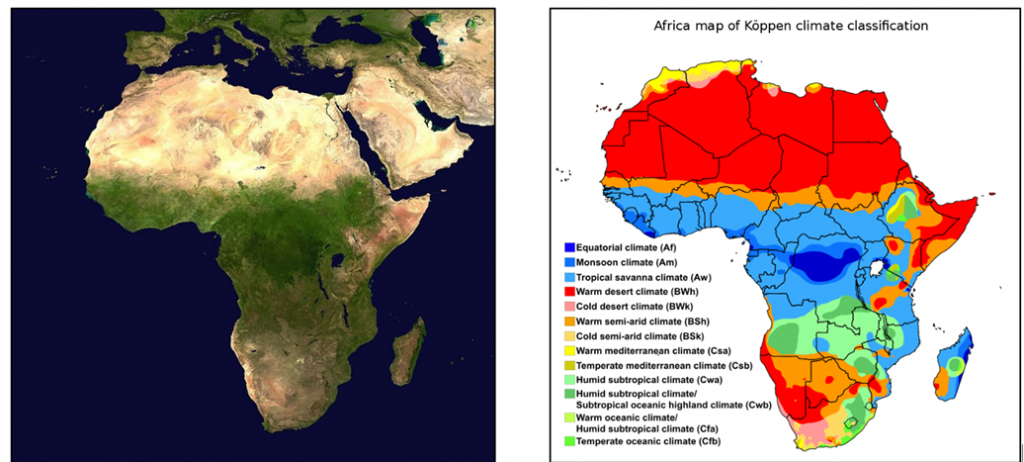

Renewable Targets for Africa w.r.t. Solar Power
Africa Oil & Power recently published an article on Renewable output targets by sub-region in Africa.[5] Some countries have more favourable climate conditions to deliver these targets, whilst others will be challenged. A review of Solargis’ Photovoltaic Electricity Potential maps gives some more relevant Solar Power data[6]:

This range of Photovoltaic Electricity Potential means a wide range of Solar facilities and costs would result among these countries for a given power requirement. Solargris’ maps provide long-term averages of daily/yearly potential electricity production from a 1 kW Solar PV power plant. The assumed PV system configuration consisted of ground-based, free-standing structures with crystalline-silicon PV modules mounted at a fixed position, with optimum tilt to maximize yearly energy yield. The use of high efficiency inverters is assumed in their maps.
For an assumed industrial facility (i.e. Upstream or Mining), the assumed power demand requirement would be fairly constant (e.g. 24/7/365) and for comparison purposes of this example assumed to be 25 MW:
- 25 MW x 24 hours x 365 days = 219,000 MWh = 219,000,000 kWh power needed
- This amount of energy demand is 24/7/365 but the annual Solar radiation is Annual PVOUT/ 1 kWp;
- Assume 1 MWp plant requires 2632# x 380 W Solar PV panels; and 1 hectare for 1 MW;
- Market cost of PV panels ranges significantly, but $0.37/W for a 380 W panel delivered is conservative;
- Cost of Solar PV panels is assumed to be ~1/2 of the Gross Cost of a Solar PV Farm (on this scale);
- For a partial selection of African countries, the Solar PV plant size and cost would vary as shown:

(Note: Cameroon, Ethiopia, and Republic of the Congo data from Solargis[7], but not in Africa Oil & Power article on Renewables)
Added to these costs would be the cost of a high capacity, long-duration Energy Storage System (e.g. Hydrogen P2G2P). It is also likely that a hybrid power generation system for some locations may include additional Renewables (like Wind) and probably Conventional Power Generation (e.g. Gas fired engine or turbine power generators).
From the results, it is apparent that 100% Renewable-Solar could be uneconomic for some of Africa compared to Conventional Power Generation. Gas fired engine or turbine power generators cost ~$2MM/MW (~$50MM for this 25 MW example). Conventional Power Generation would however have OPEX costs including fuel, increased maintenance costs for the rotating equipment, and increased numbers of operations and maintenance personnel. Also not considered in this cost comparison is any Regulatory costs associated with the GHG emissions of Conventional Power Generation. ESG considerations may be part of decisions to adopt hybrid Renewable solutions in order to better access funding and finance.

Renewable Targets for Africa w.r.t. Wind Power
Africa Oil & Power’s article on Renewable output targets by sub-region in Africa can also be examined for Wind Power possibilities.[9] Some countries have more favourable wind climate conditions to deliver these targets, whilst others will be challenged. A review of Global Wind Atlas wind maps gives some more relevant Wind Power data[10]:

This range of Mean Wind Speeds and resultant applicable Wind Turbine power means a wide range of Wind facilities and costs would result among these countries for a given power requirement. Global Wind Atlas’ maps provide Mean Wind Speeds able to be used with a typical Wind Turbine Power Curve – in this example it was assumed to be the GE 1.7-100 Wind Turbine. The assumed number of Wind Turbines can be calculated from this information. Unfortunately not all locations will be suitable for this Renewable due to low Mean Wind Speeds.
Once again, for an assumed industrial facility (i.e. Upstream or Mining), the assumed power demand requirement would be fairly constant (e.g. 24/7/365) and for comparison purposes of this example assumed to be 25 MW:
- 25 MW x 24 hours x 365 days = 219,000 MWh = 219,000,000 kWh power needed
- This amount of energy demand is 24/7/365;
- Assuming the required number of turbines is MWh/(Turbine Applicable MWp x 24 x 365)=25/MWp;
- Wind Farm Size varies according to land topography and access constraints, but an average value of 1 hectare / Wind Turbine has been suggested;
- Market cost of Wind Turbines have been changing rapidly, but $3MM for a GE-1.7-100 Wind Turbine delivered and installed is conservative;
- Cost of Wind Turbines are assumed to be ~1/2 of the Gross Cost of a Wind Farm;
- For a partial selection of African countries, the Wind Farm size and cost would vary as shown:

(Note: Cameroon, Ethiopia, and Republic of the Congo data from Global Wind Atlas[11], but not in Africa Oil & Power article on Renewables)
Again, added to these costs would be the cost of a high capacity, long-duration Energy Storage System (e.g. Hydrogen P2G2P). It is also likely that a hybrid power generation system for some locations may include additional Renewables (like Solar) and probably Conventional Power Generation (e.g. Gas fired engine or turbine power generators).
From the results, it is apparent that 100% Renewable-Wind could be uneconomic for some of Africa compared to Conventional Power Generation. The Mean Wind Speed realistically needs to be greater than ~6 m/sec – if onshore locations are not suitable, there may be some offshore locations with higher Mean Wind Speeds which could be investigated for the three challenged examples above. Alternately there may be mountain or hill ridgelines with suitable local increases in Mean Wind Speeds which could be investigated.

Alternative Renewables
We have seen that some areas of Africa are well suited to Solar Power and/or Wind Power, but not all areas are suitable for these two Renewables. Fortunately we have some additional Renewables to consider for potential power generation in some areas as part of the Energy Transition. More details on each of these Renewable solutions will be covered in upcoming articles.
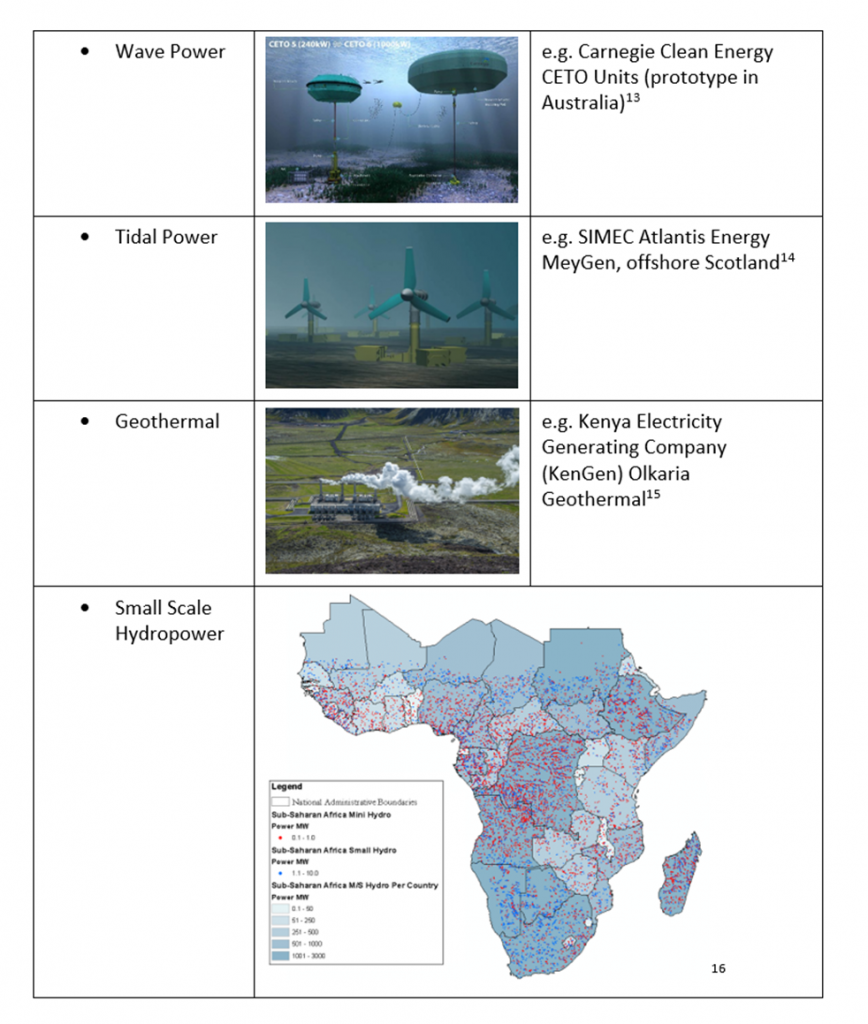
Obviously geographical proximity to coastlines is needed for the Wave and Tidal Power solutions. Geothermal solutions need geothermal reservoirs within ~3000m of the surface. Kenya is a regional leader with 676MWe of geothermal energy installed. Other East African countries with geothermal potential include Ethiopia, Tanzania, and Djibouti. West Africa may have some geothermal potential based on preliminary studies associated with volcanics (e.g. Cameroon). Small scale hydropower has a wide potential (e.g. “run-of-river” schemes) as shown in the map above, and some scaling up is being demonstrated (e.g. Nigeria’s Kashimbila hydropower plant, 40 MW for $120MM).
Role of Clean Gas Power Generation in Africa’s Energy Transition
As you can see in the preceding sections, Solar and Wind Renewables are challenged in some parts of Africa due to unfavourable prevailing climate conditions and current costs of the equipment. Other types of Renewables may be applicable in the future with more technology advancement and development work. In the meantime, Clean Gas Power Generation could have an important role in the Energy Transition from other more carbon intensive fuels like Coal, Heavy Fuel Oil (HFO) and Diesel. Clean Gas Power Generation emits fewer GHG and other pollutants and it has been characterised as a “bridge” in the Energy Transition and a key part of the “energy mix”.[17]
IEA projects Africa to have significant increase in electricity demand over the next 20 years from ~700 terawatt-hours (TWh) today to somewhere between 1,600-2,300 TWh in 2040.[18] Renewables will grow from ~6 TWh of Solar and ~15 TWh of Wind in 2018 to ~229-533 TWh Solar and ~159-264 TWh Wind in 2040. Large increases in projected amounts of energy from these two Renewables, but not enough to satisfy the increased power demand. Gas powered electricity is projected to grow from 345 TWh (2018) to ~ 658-850 TWh in 2040. So it is clear that Gas is important and the WEF article referenced at the start of this article is correct in supporting Clean Gas for Africa.[19] Right now energy-related CO2 emissions in Africa represent ~2% of cumulative global emissions and they could only grow to ~3% in 2040. Over a billion people in Africa would benefit from increased electricity access, clean water, and improved sanitation with these increases in energy.
Thankfully Africa has good reserves of Natural Gas across the continent in countries including Algeria, Egypt, Mauritania, Mozambique, Nigeria, Cameroon, Republic of Congo, Senegal, South Africa, and Tanzania. Africa had about 40% of the global Gas discoveries between 2011 and 2018. Nigeria has published several plans and programs: (1) Nigerian Gas Master Plan; (2) Nigerian Gas Flare Commercialization Program; (3) Nigerian Gas Transportation Network Code; and (4) National Gas Expansion Program to help develop their significant Natural Gas reserves in order to provide more reliable, cost-effective electricity.[20] This is a good model for others.
Clean Gas can mean Methane in some form (i.e. Pipeline Gas, Compressed Natural Gas (CNG), Liquified Natural Gas (LNG)), or Liquified Petroleum Gas (LPG) including Butane and Propane. Depending on the type of end user and the distance from Gas reservoir source (or processing plant) to market, each type of Clean Gas will likely find a good application across Africa. A shortage of long distance Gas transmission pipelines and Electricity Distribution transmission lines means that some local power solutions would be relevant. Hybrid Microgrids are a good solution to combine Clean Gas Power Generation with Renewables. The Clean Gas component can mean road transported CNG, LNG, or LPG to Distributed Power Generation plants. These plants would be linked as shown below to the Renewables in Hybrid Microgrids to support Industrial, Commercial, and Residential users. Investors need to support these hybrid solutions to deliver better environmental, health, and development outcomes for Africa.

The Energy Transition does not happen all at once. Some countries are at different places on the transition timeline than others. African countries with significant existing Clean Gas resources will want to use them first to improve their economies and living standards including clean water and improved sanitation. As their populations grow, their energy demands will increase significantly and a mix of energies will be required including an increasing percentage of all types of Renewables described in this article.
[1] https://www.weforum.org/agenda/2020/07/12-reasons-gas-africas-renewable-energy-future/
[2] https://hess.copernicus.org/articles/11/1633/2007/hess-11-1633-2007.pdf
[3] https://solargis.com/maps-and-gis-data/download/africa
[4] https://s3-eu-west-1.amazonaws.com/globalwindatlas3/HR_posters/ws_AFR.pdf
[5] https://www.africaoilandpower.com/2020/09/25/renewable-output-targets/
[6] https://solargis.com/maps-and-gis-data/download/africa
[7] https://solargis.com/maps-and-gis-data/download/africa
[8] https://www.energy-storage.news/news/africas-largest-off-grid-solar-hybrid-goes-online-at-nigerian-university-bu
[9] https://www.africaoilandpower.com/2020/09/25/renewable-output-targets/
[10] https://globalwindatlas.info/
[11] https://globalwindatlas.info/
[12] https://cleantechnica.com/2019/07/22/lake-turkana-wind-power-brings-310-megawatts-of-renewable-energy-to-kenya/
[13] https://www.carnegiece.com/
[14] http://www.scottishenergynews.com/meygen-developer-of-the-worlds-largest-tidal-energy-project-opens-new-uk-head-office-in-scotland/
[15] https://www.power-technology.com/projects/olkariageothermal/
[16] https://www.mdpi.com/1996-1073/11/11/3100
[17] https://www.atlanticcouncil.org/blogs/new-atlanticist/gas-in-the-energy-transition-bridge-or-the-destination/
[18] https://www.iea.org/reports/africa-energy-outlook-2019
[19] https://www.weforum.org/agenda/2020/07/12-reasons-gas-africas-renewable-energy-future/
[20] https://www.africaoilandpower.com/2020/09/11/bringing-it-home-the-emerging-role-of-nigerian-gas-for-domestic-use/

